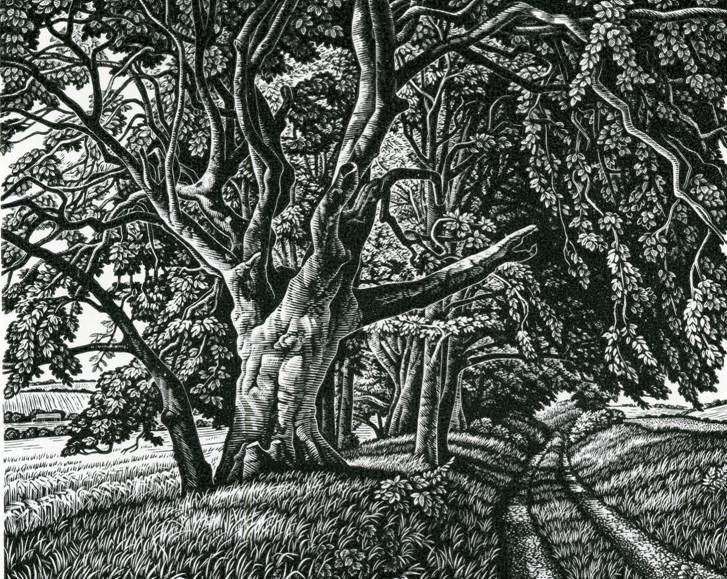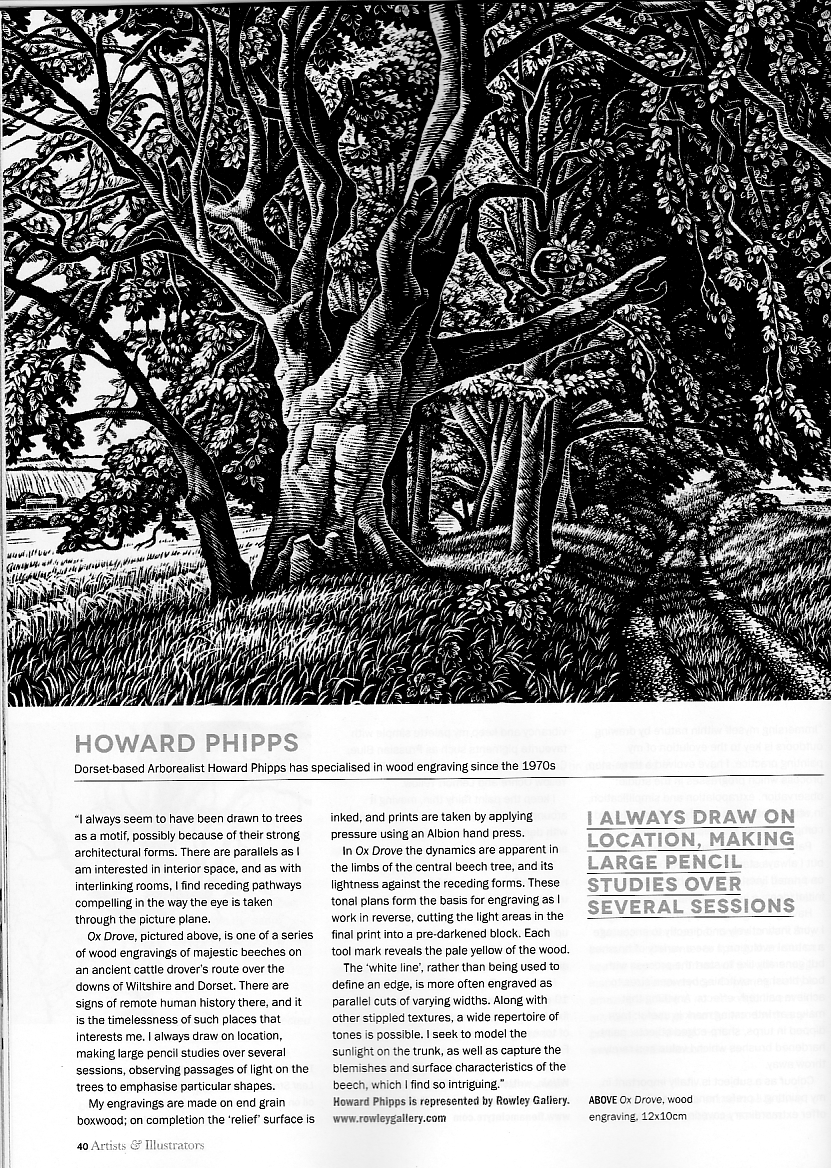I seem always to have been drawn to trees as a motif in the landscape, possibly because of their strong architectural forms. There are parallels as I am also interested in interior space, and as with interlinking rooms I find receding pathways compelling in the way the eye is taken through the picture plane.
Ox Drove, pictured above, is one of a series of majestic beech trees on an ancient drovers’ route over the downs of Wiltshire and Dorset, close to my home. There are signs of remote human history apparent in this landscape, and it is the timelessness of such places that interests me. I always draw on location, making large pencil studies over several sessions, observing passages of light on the trees, in order to emphasise particular shapes. In this instance the dynamics apparent in the limbs of the central beech tree, and its lightness against the receding forms. These tonal plans will be the basis for engraving, all important as I will then be working in reverse, cutting what will be the light areas in the final print into a pre-darkened block. Each tool mark will reveal the pale yellow of the wood beneath. The ‘white line’ rather than being used to define an edge, is more often engraved as parallel cuts of varying widths. Along with other stippled textures a wide repertoire of tones is possible. Thus I seek to model the sunlight on the trunk, as well as capture the blemishes and surface characteristics of the beech which I find so intriguing.
Howard Phipps / The Rowley Gallery
※
Taken from an article on The Arborealists in the February edition of Artists & Illustrators magazine –






Really great to have a few Arborealists exhibiting at the Rowley.
I think they’re Arborowleyists.